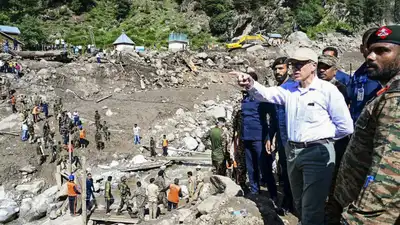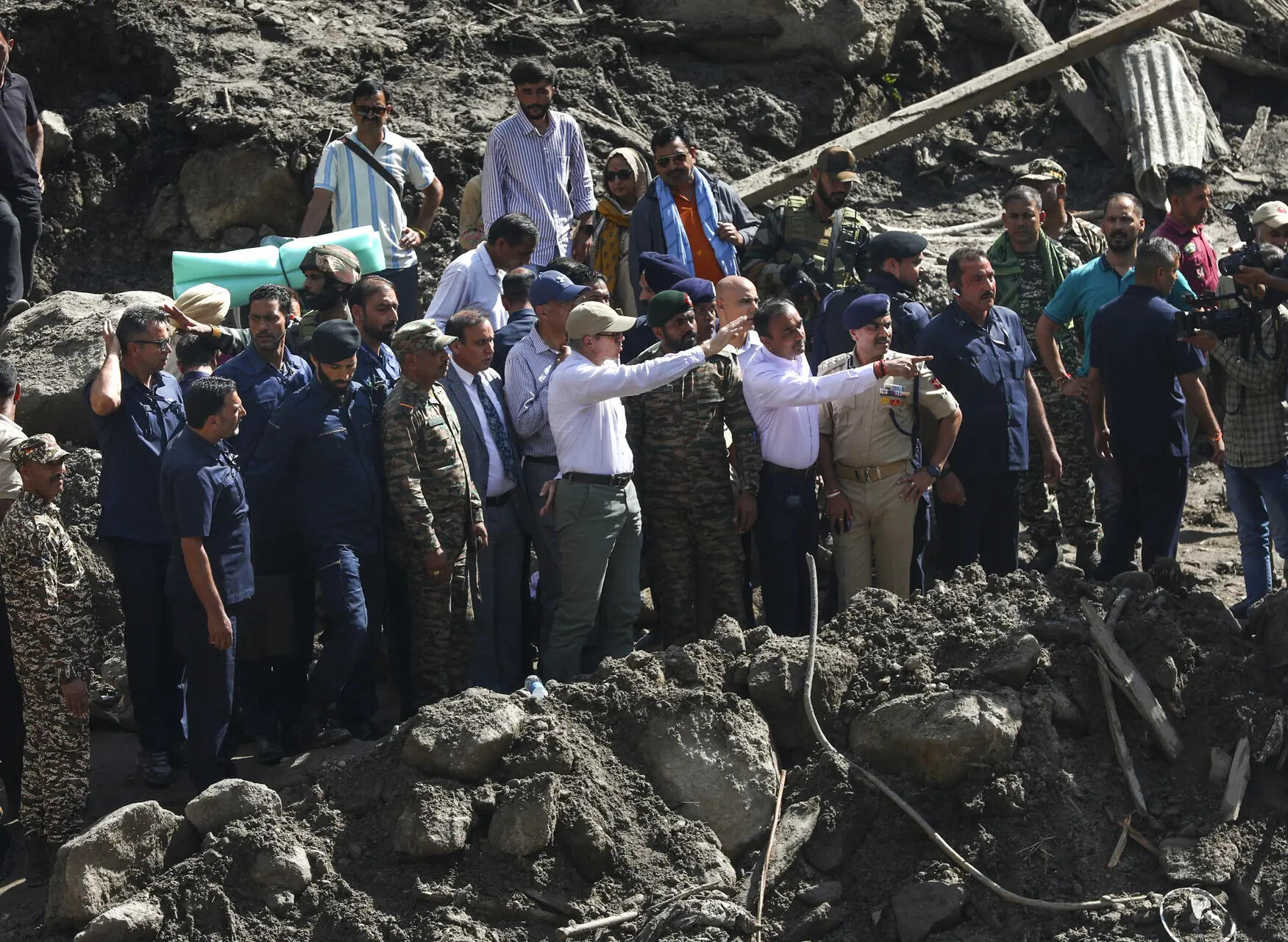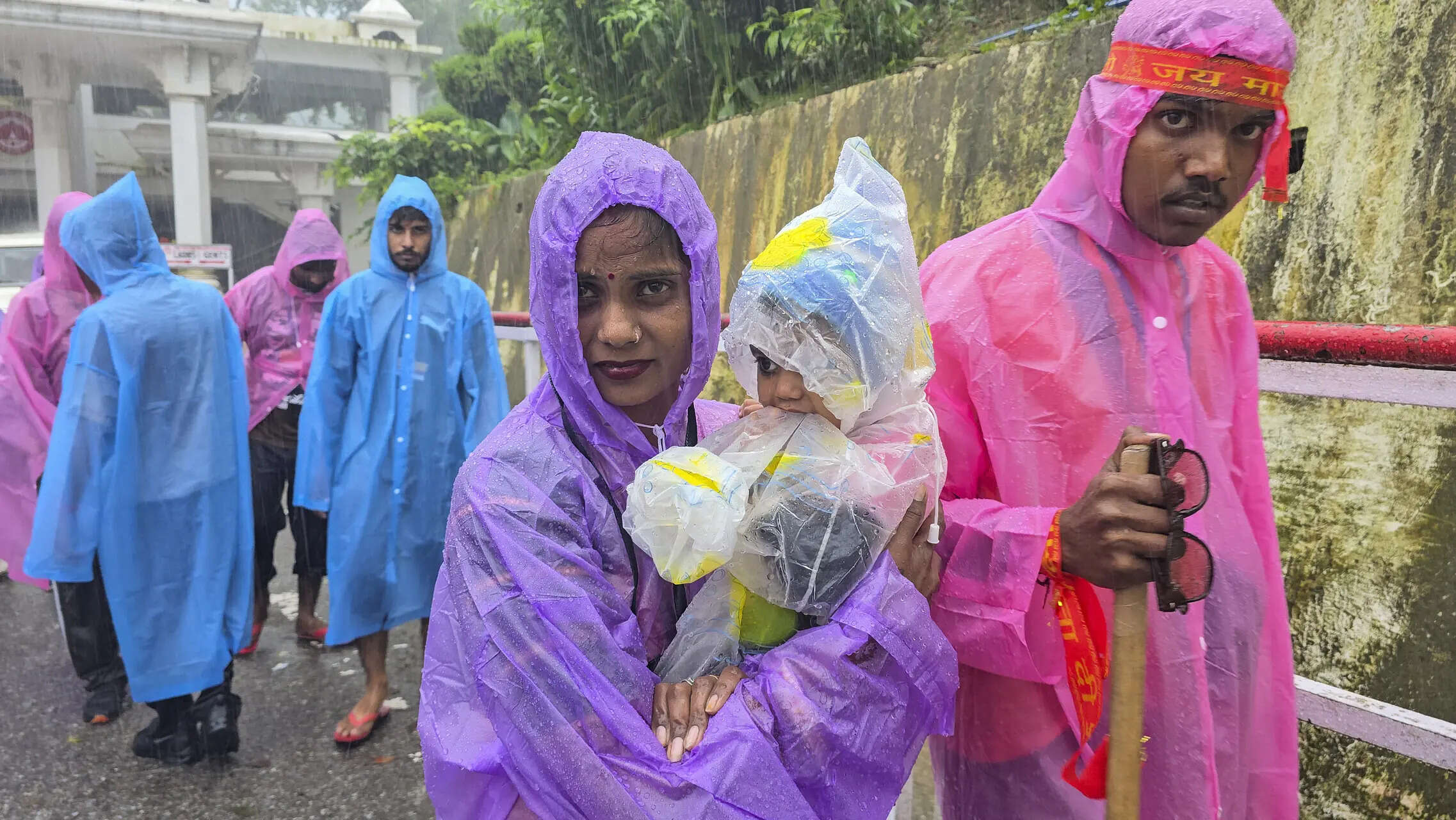ARTICLE AD BOX

NEW DELHI: Jammu and Kashmir chief minister Omar Abdullah on Wednesday questioned why the Shri Mata Vaishno Devi Shrine Board, chaired by Lieutenant Governor Manoj Sinha, allowed the pilgrimage to continue despite advance warnings of heavy rainfall that culminated in a deadly landslide near the shrine in Reasi district. Speaking to reporters, Abdullah criticised the “apathetic approach” of authorities. “We will have to talk about it later. When we knew about the weather, should we not have taken certain steps to save those lives? The weather warning had come to us a few days ago,” he said. Referring to the victims, he asked, “Why were these people on the track? Why were they not stopped? Why were they not moved to a safe place? This has to be discussed later.
We feel sorrow over the loss of 29 to 30 precious lives.” The landslide struck around 3 pm on Tuesday, on the 12-km old trek from Katra to the shrine, catching devotees by surprise. While the new Himkoti route was suspended earlier in the morning, the old track remained open until 1:30 pm. Most of the casualties were pilgrims from Uttar Pradesh, Rajasthan, Delhi and Punjab.

Kishtwar: Jammu and Kashmir Chief Minister Omar Abdullah during his visit to Chisoti village after a flash flood triggered by cloudburst, in Kishtwar.
LG reviews relief operations Lieutenant governor Manoj Sinha headed a high-level meeting on Wednesday to assess rescue and relief measures.
He directed officials to evacuate people from low-lying, flood-hit areas, restore essential services such as healthcare, drinking water, power and rations, and ensure adequate stocks of medicines and supplies in disaster-hit regions. He instructed that alternate routes be created where roads and bridges had collapsed, hospitals be prepared for any outbreak of waterborne diseases, and telecom connectivity restored swiftly. The power development department was asked to work with NHPC and power grid corporation to expedite electricity restoration, while the jal shakti department was told to make alternative arrangements for clean drinking water in remote habitations. Sinha also ordered non-essential government offices, schools and colleges to remain closed until further notice, and directed that every district maintain 24/7 control rooms.
He stressed that no officer or employee would be allowed to take leave during the crisis.

Katra: Vaishno Devi Yatra has been suspended following heavy rainfall and adverse weather conditions, in Katra. (PTI Photo)
Record-breaking rainfall and flooding Jammu and Udhampur registered their highest-ever 24-hour rainfall, according to the IMD. Udhampur recorded 629.4 mm between 8.30 am August 26 and 8.30 am August 27, surpassing its previous record of 342 mm in 2019. Jammu registered 296 mm during the same period, breaking the earlier record of 272.6 mm set in 1973. The Jhelum river crossed the danger mark of 22 feet at Sangam in Anantnag, with water entering several residential areas in Srinagar.
Authorities issued a flood alert and assured residents they were closely monitoring the situation. Massive damage has been reported to public infrastructure, bridges, homes and commercial establishments across the Union Territory. The Srinagar–Jammu National Highway was shut due to multiple landslides, along with the Kishtwar–Doda–Sinthan–Anantnag road (NH-244) and the Mughal Road.Communication breakdown, evacuations Telecom services across Jammu and Kashmir remained suspended for over 22 hours before being partially restored.
Abdullah expressed concern on X: “Still struggling with almost non-existent communication… Haven’t felt this disconnected since the terrible days of 2014 & 2019.” More than 5,000 people were evacuated from flooded areas in Jammu. Army, NDRF and SDRF teams worked alongside civil administration to provide relief and essential supplies. In one operation in Akhnoor, 12 Army personnel and 11 BSF troops, including three women constables, were winched to safety. The Indian Air Force deployed C-130 and IL-76 transport aircraft to airlift 124 NDRF personnel and 22 tonnes of relief material to Jammu. Five Mi-17 helicopters and one Chinook were also pressed into service for air-dropping food packets and drinking water in cut-off areas.

Kishtwar: Jammu and Kashmir Chief Minister Omar Abdullah during his visit to Chisoti village after a flash flood triggered by cloudburst, in Kishtwar.
Rising toll, ex gratia announced By Wednesday evening, the death toll in the rain-ravaged Union Territory had risen to 41, with 34 killed in the Vaishno Devi landslide alone. Twenty others were injured.
Four deaths were reported from Doda district due to flash floods. Lt governor Manoj Sinha announced an ex gratia of Rs 9 lakh each to the families of the victims. Uttar Pradesh chief minister Yogi Adityanath sanctioned Rs 4 lakh compensation for the kin of 11 people from his state who died in the Reasi landslide. The Shrine Board, established in 1986, is chaired by the lieutenant governor under the Jammu and Kashmir Shri Mata Vaishno Devi Act, 1988. Last year, the shrine saw nearly 98.4 lakh pilgrims. On August 14, at least 65 pilgrims on the Machail Mata trail in Kishtwar died after a cloudburst-triggered flood, making the Vaishno Devi tragedy the second major disaster to hit the pilgrimage season this monsoon.(With agency inputs)



.png)
.png)
.png)
















 7 hours ago
3
7 hours ago
3








 English (US) ·
English (US) ·